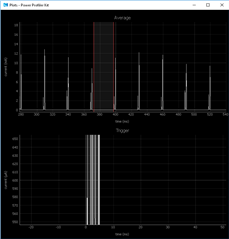When Going into Sleep, I see peaks of 12mA every 30ms (see image)
I'm assuming I can adjust that changing the connection interval settings.
I have my Connection intervals set as:
#define CONN_INTERVAL_DEFAULT (uint16_t)(MSEC_TO_UNITS(500, UNIT_1_25_MS))
#define CONN_INTERVAL_MIN (uint16_t)(MSEC_TO_UNITS(500, UNIT_1_25_MS))
#define CONN_INTERVAL_MAX (uint16_t)(MSEC_TO_UNITS(600, UNIT_1_25_MS))
And I think I looked at all issues in the Devzone about it without any luck.

Could you help me please?
